As a member of the American Academy of Audiology Board of Directors, the “big picture” in regard to hearing health care is one of my primary focus areas. With all the talk about the new health care plan currently being debated in the Senate, you may be wondering what is the status of the Hearing Aid Tax Credit Act? Unfortunately, it is not part of the current healthcare reform legislation and it has been moving through the House and the Senate at a snail’s pace.
There are some differences between the House of Representatives and the Senate bills: the House one (H.R. 1646) calls for provision of a tax credit toward the purchase of each hearing aid of up to $500 per device, available once every five years. It would be available to people age 55 and over or those purchasing a hearing aid for a dependent. This bill excludes coverage for people earning over $200,000 a year. The Senate bill (S. 1019) would provide the same $500 credit but cover all age groups.
Although similar bills are introduced on the Hill every year, they never get very far. However, since August 2009, the bill has reached the threshold of 100 bipartisan co-sponsors (66 Democrats and 34 Republicans), so there is every reason to be optimistic that it will finally be passed. This hope is shared by leading health care and advocacy organizations, including Better Hearing Institute (BHI), the Hearing Loss Association of America, the American Academy of Audiology, the American Speech-Language Hearing Association, and the AARP, among others.
Why should you care about the passage of the Hearing Tax Credit legislation? Well, for one thing, hearing loss is one of the most common conditions affecting older Americans. As Better Hearing Institute, points out that:
- 3 in 10 people over age 60 have hearing loss
- 1 in 6 baby boomers (ages 41-59) have a hearing problem
- 1 in 14 Generation Xers (ages 29-40) already have hearing loss
- At least 1.4 million children (18 or younger) have hearing problems; it is estimated that 3 in 1,000 infants are born with severe to profound hearing loss. In fact, hearing loss is the most common of birth defects, occurring more frequently than, for example, Down syndrome.
While sensorineural hearing loss can’t be cured, studies have conclusively shown that hearing technology, such as hearing aids, not only helps users hear better, but, at the same time, it vastly improves the overall quality of their lives by allowing them to participate in conversations and social activities, as well as reducing isolation, getting better compliance with medical concerns, and a host of other advantages.
By the same token, those who do not wear hearing aids are at an increased risk of loneliness, isolation, and depression. For children, untreated hearing loss means that their language and social skills development will be delayed and/or diminished. Any way you look at it, hearing aids are necessary for quality of life, safety, and skill development for many Americans young and old.
Unfortunately, for far too many people with hearing loss, they remain out of reach.
Millions of people need hearing devices but don’t get them, and a large part of the problem is the cost. There are currently an estimated 36 million Americans with some degree of hearing loss. Yet, according to BHI, only 9 million actually wear hearing aids. Of those who do not, many cite the high cost of assistive technology for not getting treatment; in fact, two out of three adults with hearing loss say financial constraints are the main reason they do not use hearing aids.
The cost of hearing aids — ranging from $1,000–$4,000 per hearing aid — is not covered by either Medicare or most private insurers, making it too expensive for many people. But a survey carried out by BHI demonstrates that 10 million of the 27 million Americans with untreated hearing loss would likely buy hearing aids if tax credits were available.
That’s why it is crucial that the Hearing Aid Tax Credit Act does not languish on the Hill much longer.
Make your voice heard! Congressmen do listen to their constituents, so it is critical that you write your representatives urging them to support this legislation.
For optimum effect, Doctors Hearing Clinic and BHI recommend that you personalize your letter, sharing the story of why the hearing aid tax credit is important to you and your family. For example, you may mention that your elderly parents are on fixed income and can’t afford the full price of hearing aids. Or, you are struggling financially and can’t pay for your child’s devices.
Alternatively, BHI offers online forms so you can type your message to your Congressperson directly, and Doctors Hearing Clinic provides copies of written directives to take further action.
Additionally, three states — New York, North Dakota, and Montana — are currently debating hearing aid tax laws similar to the federal ones. Consider asking our state representatives to entertain such legislation. The more feedback and comments your representative receives, the better a chance of him or her sitting up and listening. For more information about this very important legislation, visit www.hearingaidtaxcredit.org, or call the professionals at Doctors Hearing Clinic. If we work together on this issue, we will all benefit.

